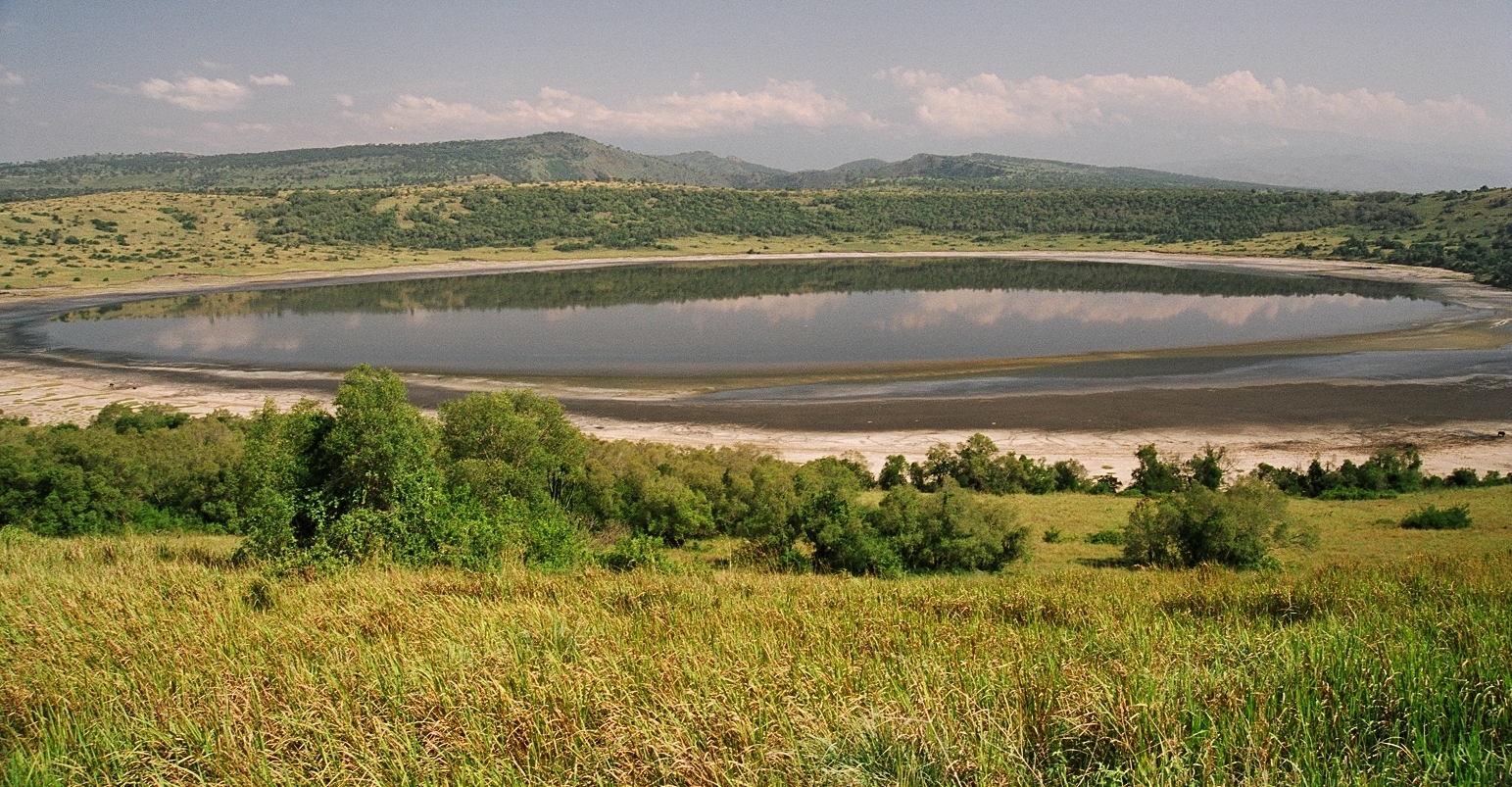
Queen Elizabeth National Park is the most famous tourist destination in Uganda. The park features various types of habitats, among which are marshes, lakes, woods, grassland savannah, and tropical forests, which are home to numerous large mammals and primates, aquatic life, and birds.
The park is located at the foothills of the Rwenzori ranges, seated directly within the arrays of the Western Arm Great Albertine Rift Valley. It features different ecosystems, including acacia savanna, tropical high forests, salt lakes, savanna grasslands, tundra, and wetlands. The two most well-known lakes, Lake George and Lake Edward, are really partially salty. Stunning craters may be seen tucked into the slopes below the rough Rwenzori Mountains, which form the backdrop of the scenery.
The rich biodiversity of Queen Elizabeth National Park features about 600 kinds of birds and over 95 different large animal species. Grassland, woodland, moist tropical forest, wetlands, freshwater rivers and lakes, and saltwater lakes are only a few of its diverse habitats. Of this, semi-deciduous forest at a medium altitude covers around 40,000 hectares. There are about 5,000 hippos, 2,500 elephants, and 10,000 buffalo. The national park is home to a sizable population of large game, of which the Ishasha sector is home to lions that can climb trees, along with other big cats. In Kyamburga Gorge, chimpanzees can be seen along with a remarkable variety of bird species.
Things to do at Queen Elizabeth National Park
Game drive
A game drive at Queen Elizabeth National Park is never to be regretted; you can effectively encounter a wider range of animals. A game drive through the Kasenyi savannah plains rewards sightings of thousands of buffaloes and elephants in the crater valleys along the explosion crater drive. Expect to watch warthogs, waterbucks, Uganda kobs, Topi antelopes, and even the uncommon semi-aquatic Sitatunga antelopes with webbed toes. Numbers of feline cats while seated in your vehicle, including lions, leopards, civet cats, genal cats, and carvel cats, can be seen frequently during game drives and occasionally on night game drives. With your 4×4 rooftop pop-up, a game drive turns marvelous for larger and perfect views.
Wild Boat Cruise
Queen Eliabeth National Park is among the few national parks in Africa where you can visit, play games, and engage in an amazing wild boat cruise. While on a boat cruise in the incredible and stunning Kazinga Channel, you’ll be able to see the majority of the park’s animals assemble to drink, hunt, and bathe. The channel waterway links two lakes, Lake George and Lake Edward, and on a cruise, you’re able to view both. The boat at Kazinga Channel impresses with incredible wildlife diversity and density, including elephants, antelopes, and predators like leopards who drink water in the shallow ends of the channel, where crocodiles, hippos, and other aquatic animals rule the waters. Boat cruise tickets are obtained at the UWA information center in Mweya.
Spot tree-climbing lions.
This is a special wild encounter to spot the king of jungle lousily relaxed under tree branches. The same incidence was previously reported in Kruga National Park, South Africa, and Lake Manyara National Park, Tanania. However, this turned out to be a rare case in those areas, but in the Ishash region south of Queen Elizabeth National Park, a few unusual tree-climbing lions were seen. The lions here are known for climbing fig trees after a morning hunt or in the sweltering afternoon sun. There are ideas that these lions ascend up the trees because of the insects and parasites like Tsetse that fly on the ground, but scientists have not yet come up with a good explanation for why they do so. With your 4×4 rooftop pop-up rental, the goal for game drives to the Ishasha region is to see the lions perched on the trees. The Ishasha area is home to elephants, warthogs, and buffalo, in addition to lions.
Birding
Queen Elizabeth National Park accommodates the highest number of bird species across the African continent, including both resident and migrant birds. The park is a perfect zone for bird studies as it offers variety, some of which are endemic to Africa and others to central African forests. Among the bird species encountered here are the African finfoot, the African hobby, the African skimmer, the Ayres’s hawk eagle, the black bee-eater, and the black-rumped buttonquail. Wide-billed roller, common sand martin, Caspian plover, collared pratincole, crab-plover, wonderful blue turaco, superior white pelican, The black-throated robin-chat, the Heuglin’s gull, Pel’s fishing owl, Papyrus gonolek, palm-nut vulture, Pelican with a pink back Sunbird with a red breast, Shoebill, Spotted Redshank, Rufous-bellied Heron, Banded Snake Eagle in the West, Yellow-bellied Wattle-Eye, White-backed Night Heron, White-winged Tern, White-throated Cuckoo, and many others
Chimpanzee tracking
Chimpanzee tracking at Kyambura Gorge eastwards of Queen Elizabeth Park is the second spot to see chimpanzees after Kibale National Park. Kyambura Gorge is a gap in the Savannah that has been dubbed “the lost valley” by the BBC and is more widely known as “the Valley of the Apes.” Kyambura Gorge is one of the amazing places in Queen Elizabeth Park where you can make your way down into the valley to sight the chimpanzees. Imagine that your primary goal is chimpanzee trekking and that Kibale Forest is not where you are headed.
